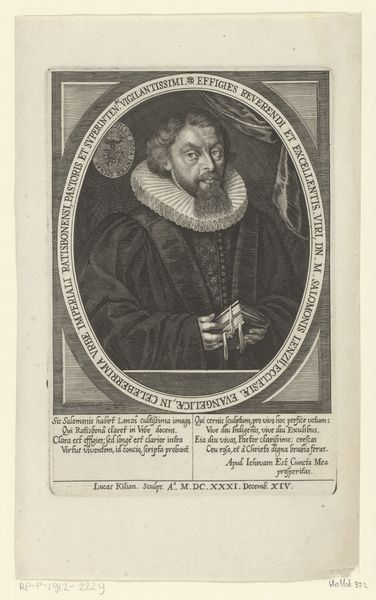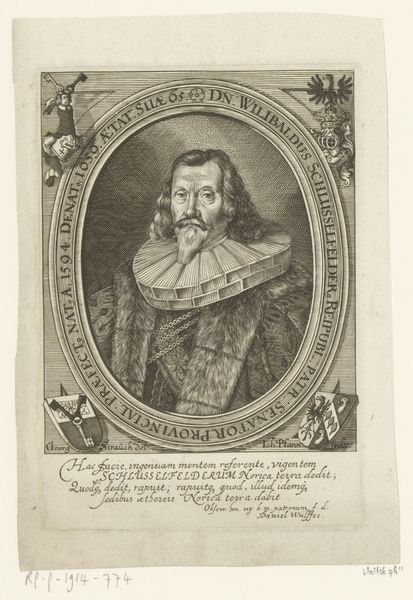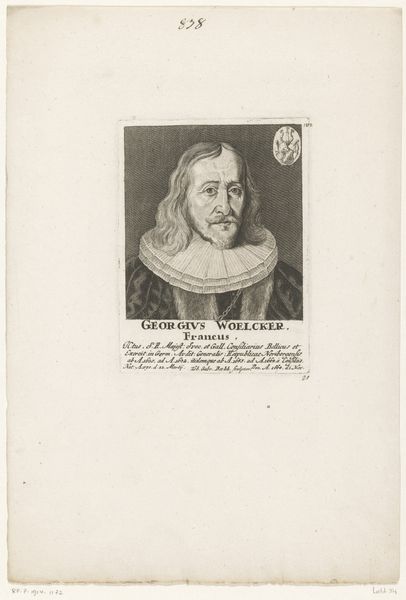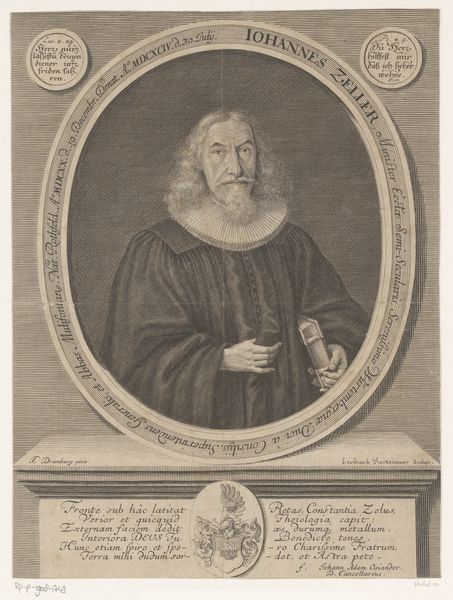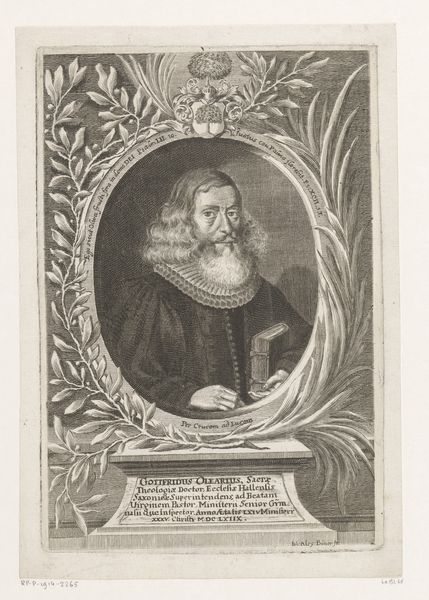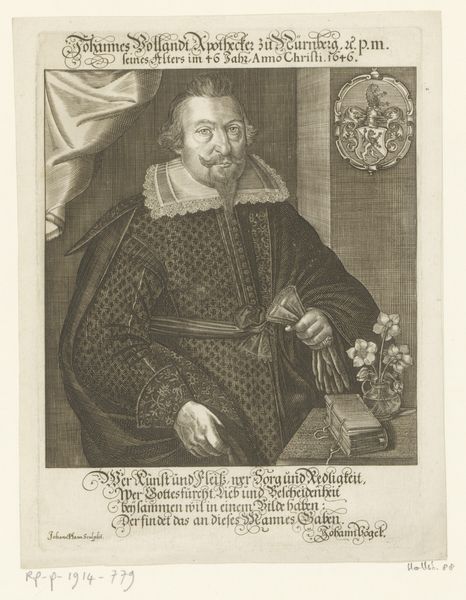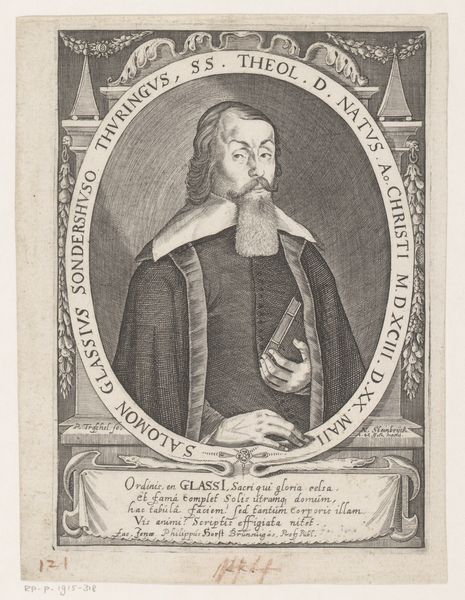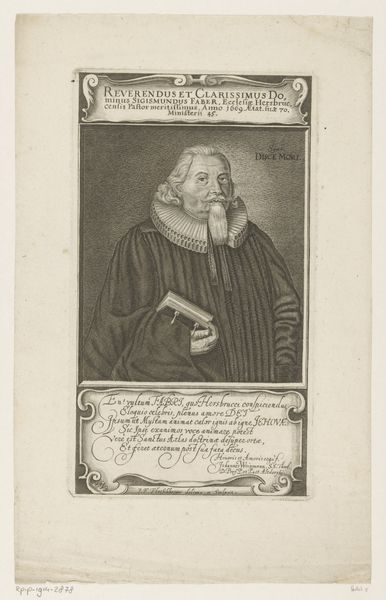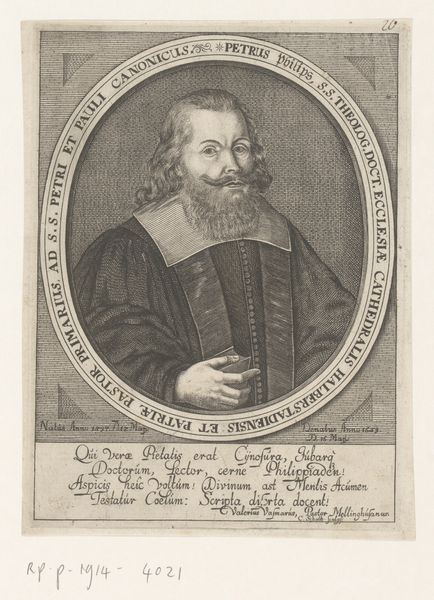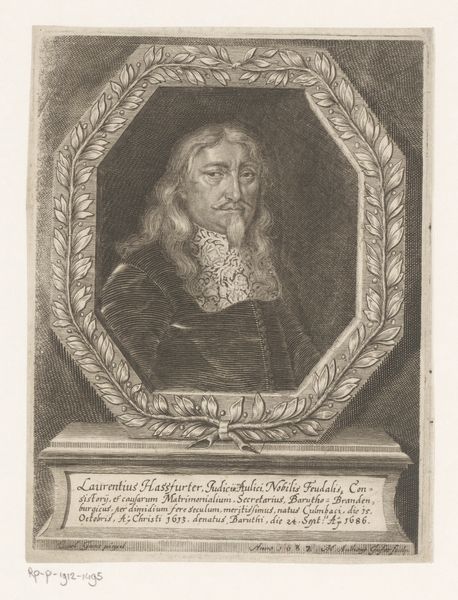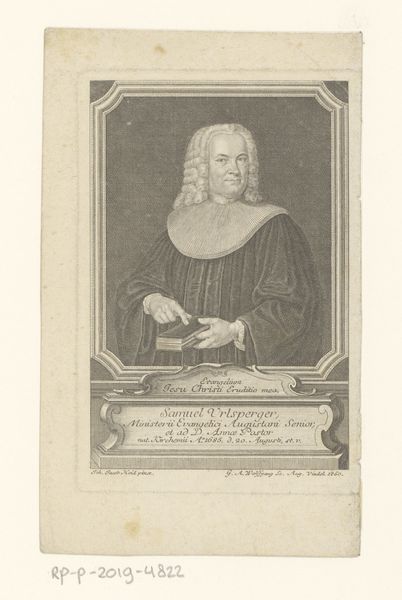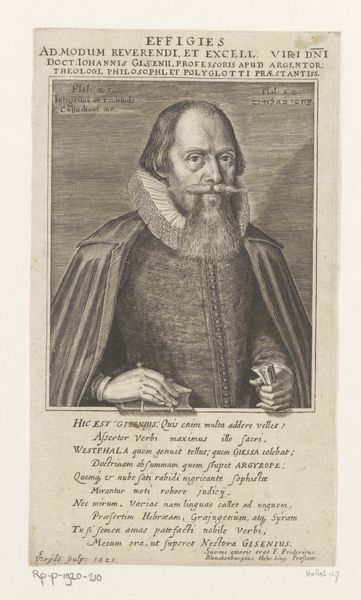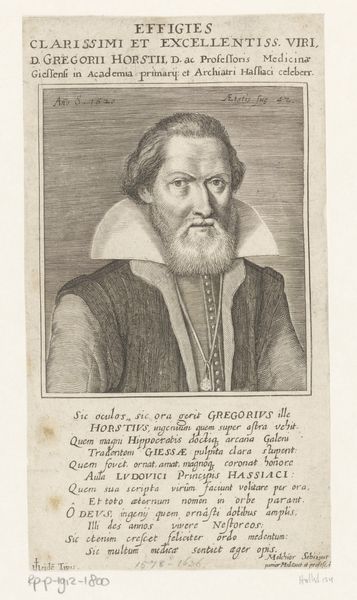
print, engraving
#
portrait
#
baroque
# print
#
old engraving style
#
personal sketchbook
#
geometric
#
history-painting
#
engraving
Dimensions: height 251 mm, width 150 mm
Copyright: Rijks Museum: Open Domain
Curator: Here we have Peter Troschel’s "Portret van Georg Nedter," made around 1665. It’s an engraving, showcasing Nedter holding a book labeled "BIBLIA". What strikes you first? Editor: It's incredibly precise! The linear details are stunning, aren't they? Look at the subtle gradations in the cross-hatching to create form, the contrast gives a compelling gravitas. The book’s position, almost being presented to us, seems key. Curator: Absolutely. Consider that this portrait would have been commissioned to assert Nedter’s intellectual and religious authority, and further emphasize his alignment to aristocratic lineages from Bavaria. Prints like this circulated within specific networks, reinforcing social bonds and projecting power. The inscription above the figure clearly spells out the noble families which Georg Nedter is connected to. Editor: The choice of medium is very telling. Engravings are reproducible. This image wasn't meant to be unique but circulated, it allowed wider dissemination. Curator: Exactly. Prints democratized imagery, though still within limitations of class and access, allowing for ideas to spread beyond elite circles and reinforcing certain desired perceptions of political and religious figures like Nedter. Note the Latin phrases at the bottom, indicating how those elites saw their subjects. Editor: The contrast in textures is captivating, too, in particular I like how it gives the image a grounded quality. We have Nedter’s textured hair and beard against the very subtle gradations of the gray background. It keeps the figure from flattening out into the page. Curator: That contrast serves to highlight Nedter's intellectual and moral character, presenting him as a figure of both substance and refinement within the specific religious and political climate. Consider, this print exists to make Georg Nedter into an idea as much as it is supposed to be a faithful portrait of him as a man. Editor: It’s amazing how much information you can pull from something seemingly so simple, a basic black and white print! It goes far beyond likeness into political representation and social aspiration. Curator: Precisely. Art isn’t created in a vacuum, after all. Editor: Indeed! Even through formalism, these works can teach us much about social climates of times long since past.
Comments
No comments
Be the first to comment and join the conversation on the ultimate creative platform.
